小型龙门铣床试验台设计(含SolidWorks三维图)(任务书,开题报告,论文说明书18000字,SolidWorks三维图)
摘要
随着信息时代的到来,计算机技术的快速发展带动了数控加工技术的日益成熟。机械加工行业对数控机床的需求和性能要求日益提高,数控机床应用面非常广泛,但仍需不断发展优化以适应更多不同种类零部件的加工需要。对于小型金属零部件加工,大型加工中心的数控机床由于不适配反而容易造成能源消耗过大、生产成本提高等不利因素,采用小型数控机床则可以针对性地提高加工效率,减小控制误差,因此小型数控机床的研发受到越来越多的关注。基于此,本课题设计研制了一台小型龙门铣床试验台。
本文首先对国内外小型数控机床的发展现状进行研究,根据机床结构机械设计原则提出了小型龙门铣床试验台的总体设计参数和要求,接下来进行主轴系统、三个进给直线机械模组的总体布局。在进行具体计算分析后,对主要零部件和关键支承件、连接件进行了选型和设计,并利用SolidWorks软件进行零件建模、整体装配。接着将主要零部件龙门横梁和支承立柱导入ANSYSWorkbench中进行有限元分析,进行静力分析和模态分析,分析结构是否存在缺陷以便改进优化。之后对运动控制器进行选型,搭建了小型龙门铣床实验台整机架构,通过编程实现了圆弧加工。
关键词:小型龙门数控机床;结构设计;零部件选型;有限元分析;运动控制
ABSRACT
With the arrival of the information age, computer technology has developed rapidly, and it has also driven the maturity of numerical control processing technology at the same time. The demand and performance requirements of CNC machine tools in the mechanical processing industry are increasing day by day. CNC machine tools are widely used, but they still need continuous development and optimization to meet the processing needs of more different kinds of parts. For the processing of small metal parts, the NC machine tools in large processing centers are easy to cause unfavorable factors such as excessive energy consumption and increased production cost due to improper fitting. The adoption of small NC machine tools can improve the processing efficiency and reduce the control error. Therefore, the research and development of small NC machine tools has received more and more attention. Based on this, this subject has designed and developed a small gantry milling machine test bed.
In this paper, firstly, the development status of small CNC machine tools at home and abroad is studied. According to the principle of machine tool structure mechanical design, the overall design parameters and requirements of small gantry milling machine test bed are put forward. Then, the overall layout of spindle system and three feed linear mechanical modules is carried out. After detailed calculation and analysis, the main parts, key supports and connectors are selected and designed, and SolidWorks software is used for part modeling and overall assembly. Then, judgewhether there are defects in the structure is analyzed so as to improve the optimization. After that, the motion controller was selected, the whole structure of the small gantry milling machine experiment table was built, and the arc machining was realized by programming.
KeyWords:small gantry CNC machine tools; structural design ; structure optimize ; part selection;finite element analysis; motion control
小型龙门铣床试验台在系统组成上与普通铣削加工机床系统类似,由主轴系统、支承系统、进给系统控制系统组成,通过控制试验台上X、Y、Z三个轴的相对运动使电主轴加工铣刀相对工件进行加工运动,实现三维数控加工。
试验台总体结构方案设计
试验台设计的总体要求
我国许多机床厂家的加工设备都配备齐全各式各样的数控软硬件,但这些大型加工厂家的设备主要以加工中心为主,对于小型金属零件有种大材小用的感觉,甚至由于加工工件不适配,常常会增大能耗,浪费电力资源,进而增加生产成本。本课题设计的小型龙门铣床试验台针对小型零部件加工,旨在提高空间利用率、降低能耗、减小误差控制的难度,同时满足实验室内小型试验台以致机械加工厂家对小型金属零部件的制造需求。
根据试验台的特点,确定其主要要求:
(1)小型龙门铣床试验台移动部件为三个进给轴,可以控制电主轴及工件在空间三维方向上自由移动,在占用空间较小的情况下尽量加大加工范围,以提高加工效率。
(2)试验台主轴转速需要达到16000r/min,以保证小型龙门铣床试验台加工效率,同时机床主轴等转速应能实现调节快速响应并保持较高精度。
(3)小型龙门铣床试验台的进给轴在运动时应满足较高的定位精度,提高工件加工精度,在丝杠螺母运动时应安装传感器来检测实时位置,控制重复定位精度,同时在拼装零部件时需减小安装误差和定位误差。
(4)进给系统能够快速移动,提高功能工作效率,且进给系统工作行程不能太大,以便提高加工精度。
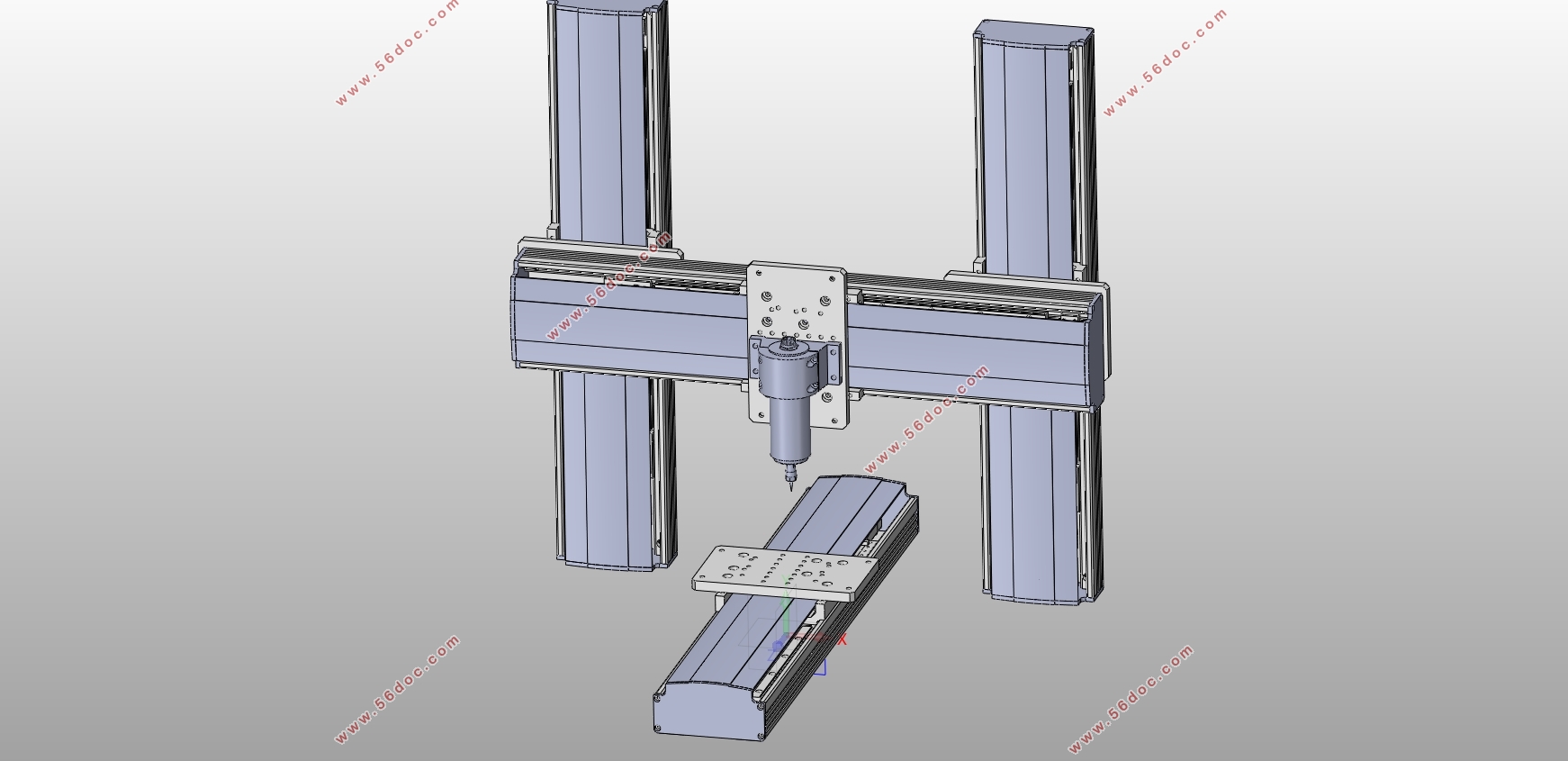
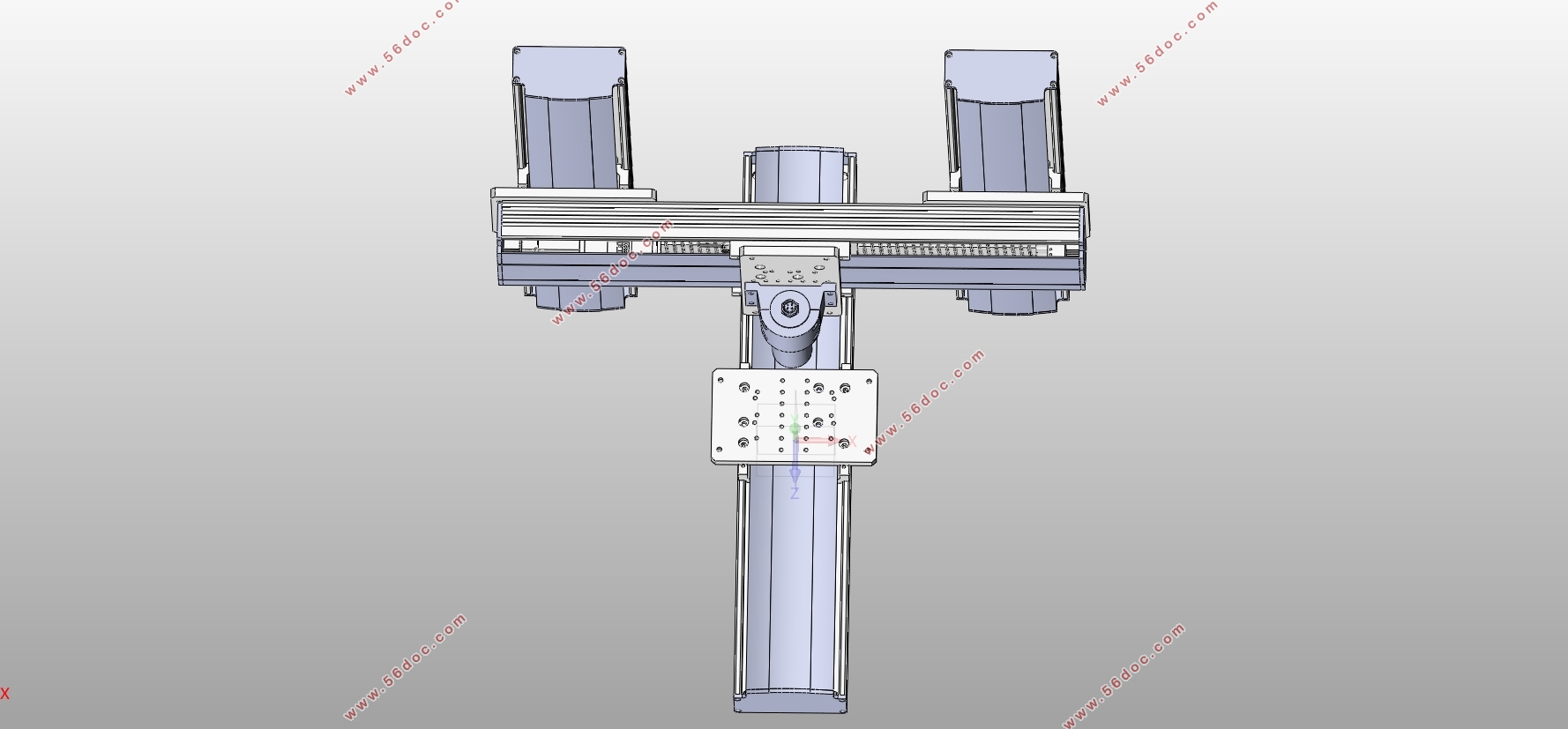

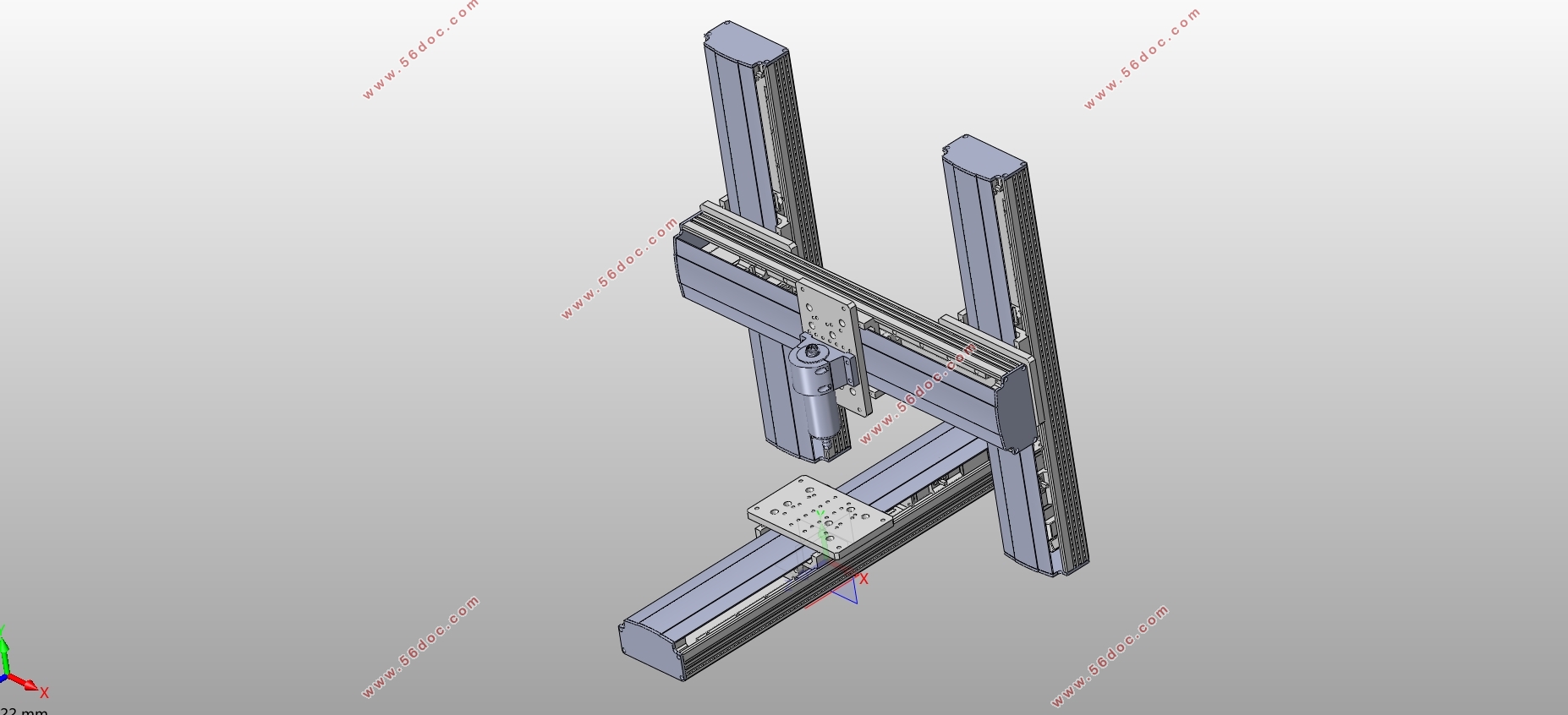
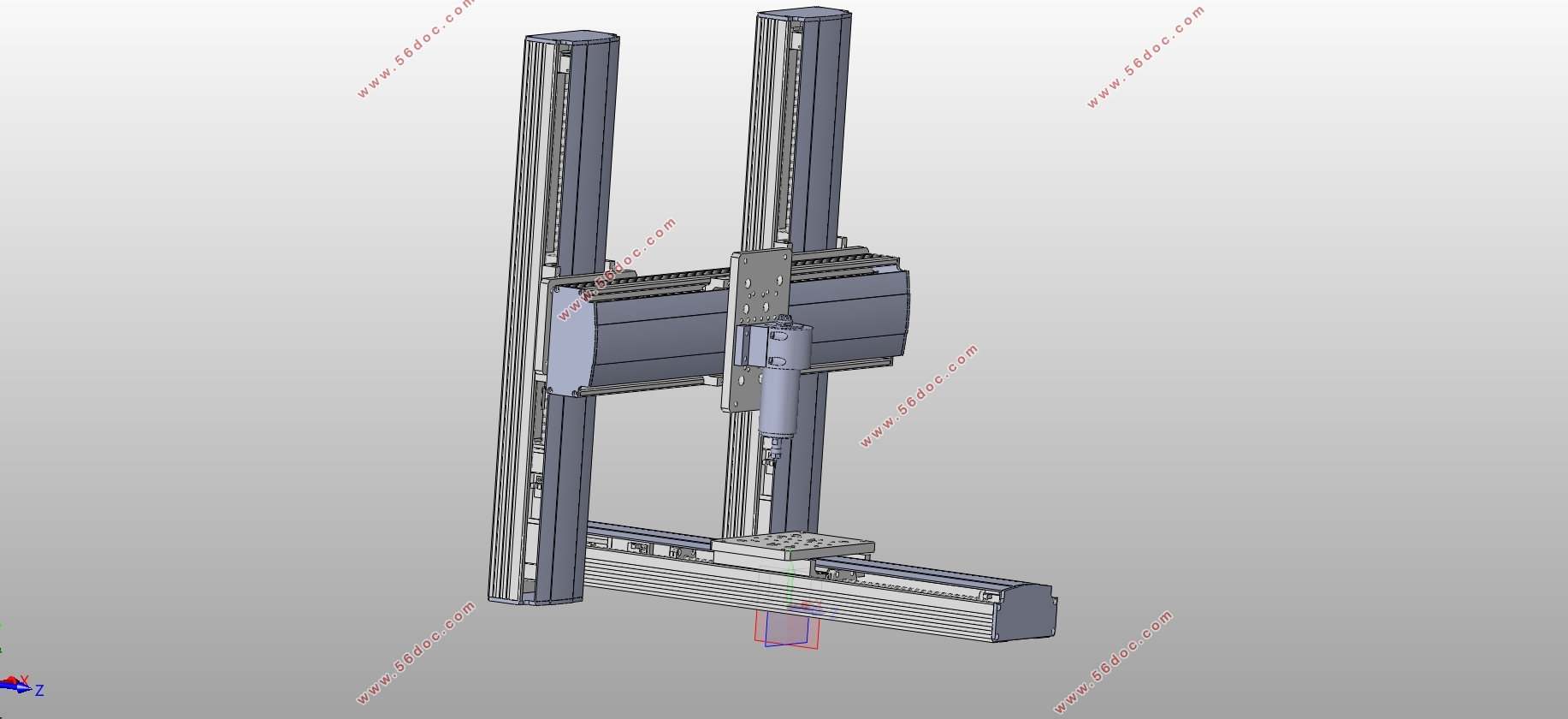
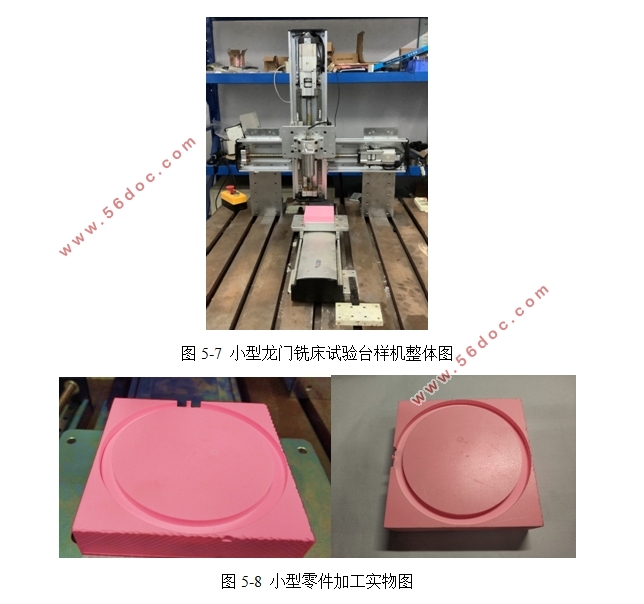

目录
摘 要 I
ABSRACT II
目 录 I
第一章绪论 1
1.1课题研究背景及意义 1
1.2国内外研究及发展现状 1
1.2.1国外研究及发展现状 1
1.2.2国内研究及发展现状 2
1.3课题研究内容 3
第二章试验台总体方案设计 5
2.1试验台结构设计的基本原则 5
2.2试验台设计的总体要求 6
2.3试验台总体结构方案设计 6
2.3.1技术参数设计 6
2.3.2机床总体布局设计 7
2.3.3机床机械结构设计 8
2.4本章小结 9
第三章小型龙门铣床试验台关键部件选型 10
3.1 电主轴系统 10
3.1.1电主轴选型 10
3.1.2主轴支座的设计 13
3.2进给系统 13
3.2.1电机选型 14
3.2.2丝杠选型 15
3.2.3联轴器选型 16
3.3 支撑件及连接件设计 17
3.3.1 丝杠螺母连接平台设计 17
3.3.2导轨型号选择 19
3.3.3半连接板设计 20
3.3.4丝杠底接块设计 22
3.3.5支撑立柱设计 23
3.4小型龙门铣床试验台三维建模 24
3.5本章小结 25
第四章小型龙门铣床试验台有限元分析 26
4.1有限元分析理论 26
4.2有限元分析步骤 27
4.3龙门横梁静动态分析 27
4.4龙门支承立柱静动态分析 32
4.6本章小结 34
第五章试验台运动控制及实际加工 35
5.1Galil DMC系列运动控制器介绍 35
5.2Galil DMC系列运动控制器操作指令介绍 36
5.3加工程序编写 42
5.4实际加工过程展示 42
5.5本章小结 43
第六章总结与展望 44
致谢 45
参考文献 46
|















